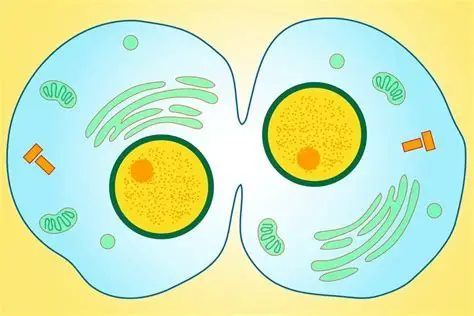Cell
In 1965, after discovery of microscope Robert Hook discovered first cell as slice of cork (Quercus suber). Anton Von leeuwenhoek discovered first living cell Bacterium (Bacillus). He is called as father of cytology. M. Schleiden, a German botanist and schwan, a British zoologist proposed cell theory, stated that all organisms are composed of cells and products of cells. Another scientist Rudolf Virchow given modern cell theory i.e all cells arise from pre existing cells (phrase omnis cellula e cellula).
Cell Division
It is a sequential process by which a single cell divides into two identical cells.
Cell cycle
It is an series of events. By which cell duplicates it’s genome and eventually divide in two equal daughter cells. It happens because cell main tains their nucleo- cytoplasmic ratio.
Two main phases: Interphase (preparatory) and M phase
Alma Howard and Stephen pelc sub-divided Interphase into G1, S and G2 phase
During these gap phases cells prepare to divide and take most of the time of cell cycle (95%). Therefore DNA pol.,RNA pol., Histone, non Histone proteins, Centriole are formed and chromosomes amount becomes double.
Cell cycle control system:
The engine of cell cycle are made up of two subunits: Cyclins and CDKs ( Cyclin dependent kinases). Cyclin are named because of synthesis and degradation in each cell cycle.
4 classes of Cyclins defined by stage of cell cycle:
1. G1 – Cyclins : D + CDK4 and 6
2. G1/S- Cyclins: E + CDK2
3. S- Cyclins: A + CDK2
4. M- Cyclins: A and B + CDK1
The regulation of Cyclin– CDK complex occur by destruction of G1 phase Cyclins by enzyme SCF, E3 ubiquitine ligase.
Another E3 Ubiquitine Ligase, APC/C is responsible for destruction of S and M Cyclins.
Mitosis:
Newly replicated chromosomes divided equally in to two daughter cells.
Term Walther Fleming in 1882.
In plants discovered by Strasburger.
Stages focused on their regulations
1. Prophase : M- CDK disrupt nuclear envelope in most of the cells through phosphorylation. O/B open and closed mitosis occur in higher and lower eukaryotes respectively.
2. Metaphase: most dynamic part of cell cycle. Kinetochore microtubule remain in a state of dynamic flux. Plus end of kinetochore microtubule can add and lose tubulin subunits while attached with kinetochore. Motor proteins ( kinesin5, kinesin14, kinesin 4 and 10, and dyneins) are responsible for maintaining movement of chromosomes.
3. Anaphase: APC/C ( Anaphase Promoting Complex/ Cyclospme) responsible for separation of sister chromatids their function control by a specific meiosis specific cohesin ( Rec8).
4. Telophase:
5. Cytokinesis:
Meiosis:
Term by former and moore
Meiosis I: ProphaseI longest 5 substages:
1. Leptotene: Bouquet formation
2. Zygotene: Synaptonemal complex, bivalent and tetrads condition formed
3. Pachytene: crossing over
4. Diplotene: chiasmata formation
5. Dyakinesis: chromosomes condense
Metaphase I
Anaphase I
Telophase I
Meiosis II: Similar to mitosis

